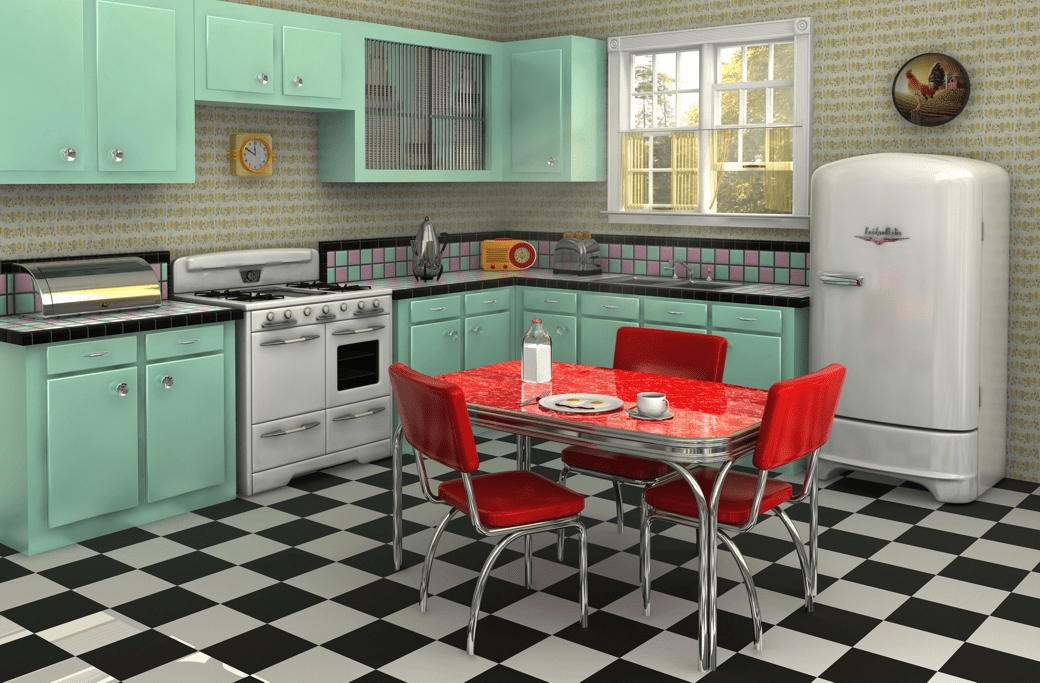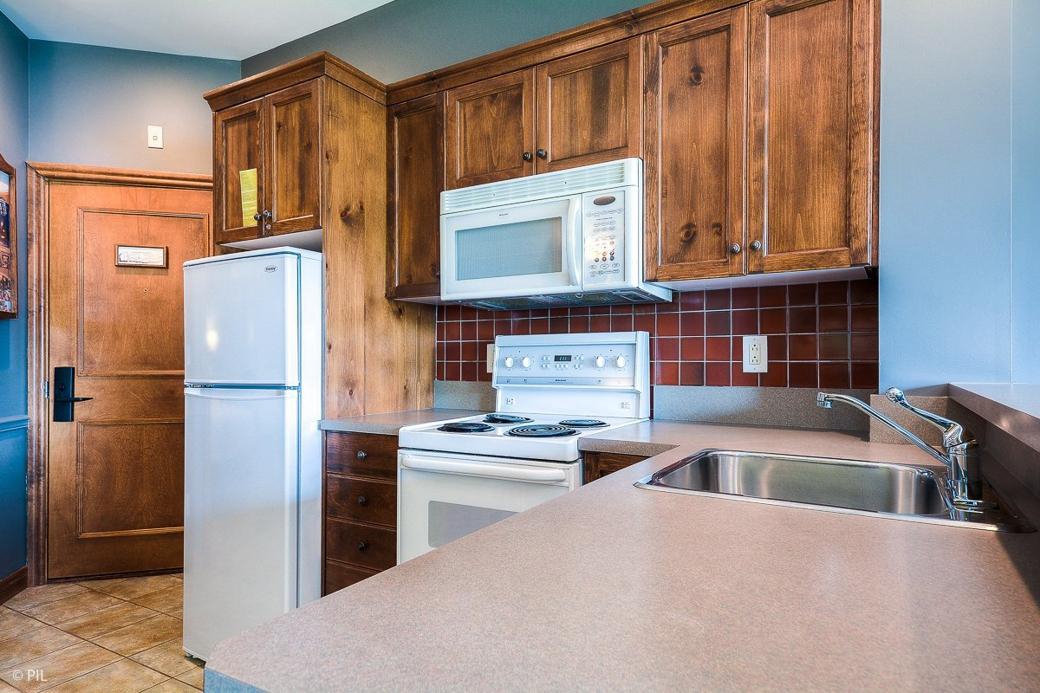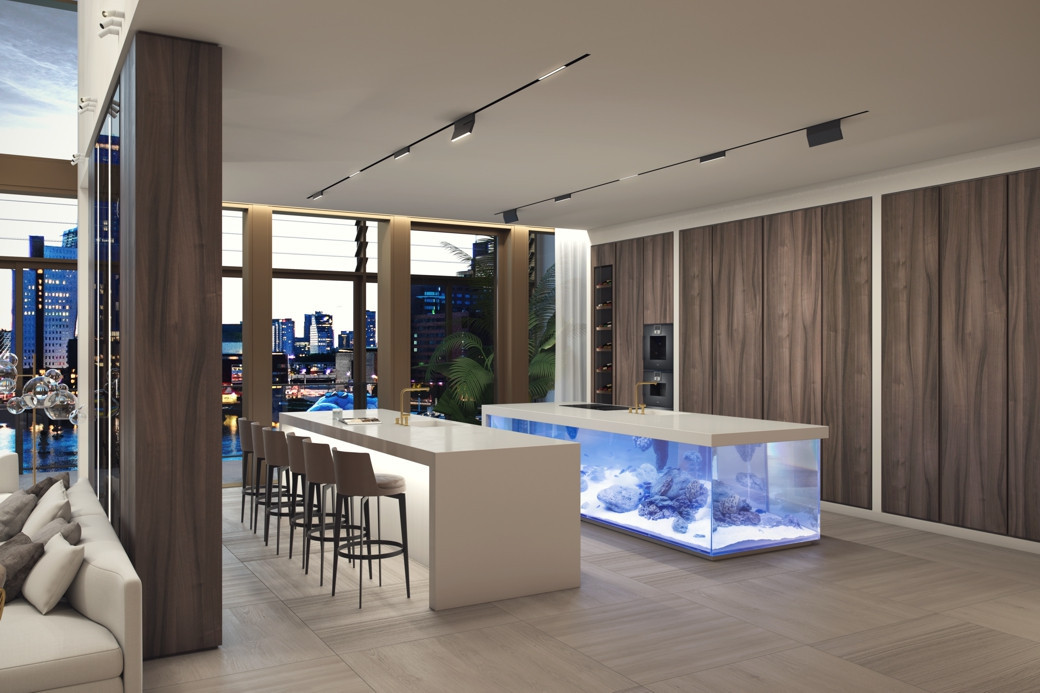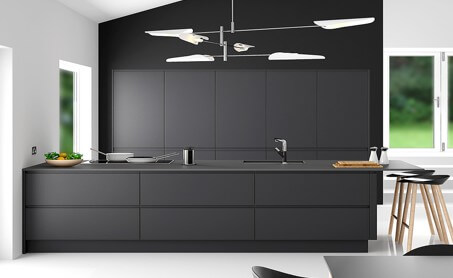1960s - The Radical
In the age of free love, flower power and pop music, kitchens became fun and youthful, featuring sleek fluid shapes and form. Most people had better things to do with their time, than stand and slave away over the kitchen stove in a domestic way. The interior became a rebellion against the trends of the 1950's. Advancement in technology meant that cooking became simpler and freed up a persons time so much so that social gatherings and events, such as dinner parties were of huge importance during the 1960's. Dining furniture turned stack-able and foldable to seat extra guests and it was during this era that appliances and furniture also became disposable.
Pop culture artists such as Andy Warhol, Verner Panton and David Hockney began to directly influence interior design during this time. Colour was a huge component of 1960’s kitchen design, clashing colours such as lime green, saffron, crisp white and burnt orange, fuchsia pink, and monochromatic black and white were often common. Dark coloured counter tops juxtaposed these bright cabinets and wall finishes included stone, timber as well as psychedelic tiles and wallpaper.
1960s Key features:
• Plastic, PVC and Vinyl
• Multipurpose
• Open plan design
• Wicker and cane furniture
• Futuristic, science fiction inspired and psychedelic
• Copper, timber, stone
• Colour Schemes: Reds, oranges, acid green, mustard's, monochromatic, whites

1970's - The Age of Avocados
There was a seriousness about kitchens in the 1970’s, almost certainly a reflection of the movements of the time. The 1970’s were a period of change; activism, self-expression and freedom of the individual movements were at their point of climax. Kitchens during the 70’s were either open and light, or dark toned and muted. The 1970’s was still very much an era of consumption, however it was a subdued one, in which appliances were still colourful but austere in hue.
Shades common during this time were brown, avocado green, cream, dark orange or red, sage green, mustard as well as aubergine. These were often offset by dull gold, tarnished copper or stainless steel which can be associated with the influence from the disco era. These earthy tones of kitchen décor was paired with dark timber cabinetry or wallpaper featuring bold coloured plaid or check prints.Shades common during this time were brown, avocado green, cream, dark orange or red, sage green, mustard as well as aubergine. These were often offset by dull gold, tarnished copper or stainless steel which can be associated with the influence from the disco era. These earthy tones of kitchen décor was paired with dark timber cabinetry or wallpaper featuring bold coloured plaid or check prints. .
Activism and Rock ‘N’ Roll music was pathing a path to a better world, and people wanted their homes to reflect this change. They were no longer the hip mod kids from the 60’s. They had grown up and so had their kitchens; welcome the entrance of the breakfast bar!
1970s Key features:
• Dark stained glass
• Dark timber cabinetry
• Microwaves
• Breakfast bars
• Style influence: European Ski lodge
• Muted colours: Brown, dull gold, avocado green, cream, army green and white

1980's - The Decade of Decadence
Now has come the ages of decadence! The 1980’s was about money, power and possessions. Everything was white, bright, and in your face. Unlike the 1970’s earthy tones, the 80’s kitchen was bright and luminous combined with preppy pastels, they were open and somewhat vacant. The browns and avocados were replaced with sushi like colour combos of black and whites, greens and pinks. This meant that kitchens were more spacious and much brighter, usually wall to ceiling white, light blonde timbers and lighter stained wood, also helped to bring light into the space.
The 80’s kitchen was minimalistic but well equipped, for those who could afford it, their kitchen was packed with the latest and largest appliances. People were watching celebrity chefs, in the comfort of their own homes for the first time, so this shifted the focus to needing the latest and biggest appliances on the market.
Abstract and asian influence the 1980’s kitchen featured vertical blinds, asian inspired art and lots of downlights. People were also excited by their status and wanted to show off, the sophisticate kitchen was what it was all about. Wine racks, plants and homewares made from Glass, brass and stainless steel.
1980s Key Features:
• The breakfast nook
• Every shade of white
• Food Processors
• Hanging wire baskets
• Vertical blinds
• Abstract art
• Soft lighting – downlights
• Pine timber finishes















































